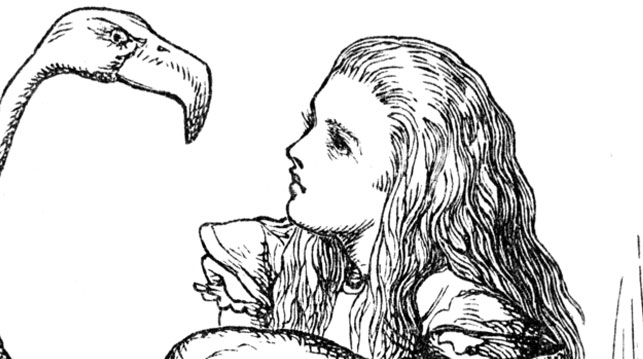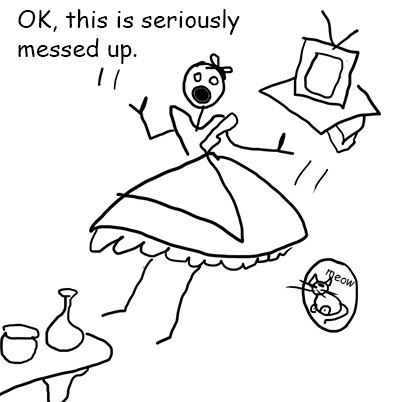
Telling a satisfying story is all about keeping your promises. In the rising action, you must make your audience want something: answers, change, resolution of some sort. In your climax, you must give them the kind of payoff they have been awaiting; not the resolution they expect, necessarily. It’s OK, even preferable, to surprise the reader, but a resolution to the tension driving your particular story is required.
If the story hinges on a mystery, for example, you must provide some solution. If you do not, then your story—for all its vivid setting, rousing action, and exquisite character development—is a failure. Heed the words of renowned filmmaker Werner Herzog: “Maneuver and mislead, but always deliver.”
Exactly what sort of payoff you need to deliver will be determined by the kind of story you’re telling. Over the next months, we’ll look in greater detail at the four story types laid out in my previous blog post. Today, we’ll consider the milieu story: what it is, where it starts, and how it ends.
Get a free sample proofread and edit for your English document.
Two professional proofreaders will proofread and edit your English document.
Digging Your Scene
“Milieu” is just a fancy word for “setting,” and a milieu story is concerned primarily with the environment wherein the action unfolds. This includes not only the physical landscape but the social, political, and cultural conditions. It may be an alien planet or fantasy realm, or even an unfamiliar foreign culture.
The reader experiences the milieu through a viewpoint character, an outsider, and learns about the place as the outsider does. (Alternately, the viewpoint character may be a foreign exile, explaining his strange culture to an audience surrogate, as in Gary Jennings’s 1988 historical novel, Aztec.)
The milieu story, like the others we’ll examine in the coming months, is primarily a structural conceit. Within its framework, mysteries may be solved, great events may transpire, and characters may redefine their positions in the world. But the milieu structure determines the starting and ending points: the story begins at or shortly before the point when the outsider arrives in the milieu to be explored, and ends when the outsider departs (or, more rarely, decides to remain permanently).
Of course, not every story with a richly imagined setting is a milieu story. Works of speculative fiction from Dune to The Lord of the Rings unfold in detailed universes complete with histories, languages, and mythology. But the world building is the background for the events that are the main focus; the characters are not strangers to these places.
Down the Rabbit Hole
Perhaps the purest example of a milieu story is Alice’s Adventures in Wonderland (1865), by Lewis Carroll. It begins precisely when Alice slips out of her everyday reality into a dream, and ends with her awakening. Many things happen in the interim, but nothing of any consequence, and Alice herself never attains any sort of self-knowledge. The book is a travelogue romp through lampoons of popular Victorian literature.

Alice is also the archetype of a “portal fantasy”—a story in which a character from the “real world” is whisked away to some fantasy realm. Other examples include Neil Gaiman’s Neverwhere (2008), C.S. Lewis’s Narnia books, and the 1939 film version of L. Frank Baum’s The Wizard of Oz.
The milieu story’s explanatory structure makes it a natural for didactic fiction, especially portraits of an ideal society; examples range from Thomas More’s Utopia (1516) to Ursula LeGuin’s Always Coming Home (1985). The form also lends itself to satire, where the imagined society is a distorted reflection of some aspect of the contemporary world, as in Jonathan Swift’s Gulliver’s Travels (1726) or Doris Lessing’s five-book Canopus in Argus (1979–1983).
Knowing Your Place
A final note: The milieu story, like all of these structures, is not meant as a restriction, but as a support. It doesn’t mean that you must focus on setting to the exclusion of all else. Your milieu story structure can—and should!—include strong character work, events of great import, and heady ideas; and those aspects will need their own moments of payoff and closure. But if you’ve structured your tale as a sojourn in a strange land, then the tale must end as the journey does—with either a departure or a decision to remain.
Jack F.
Get a free sample proofread and edit for your English document.
Two professional proofreaders will proofread and edit your English document.
Get a free sample proofread and edit for your document.
Two professional proofreaders will proofread and edit your document.
We will get your free sample back in three to six hours!